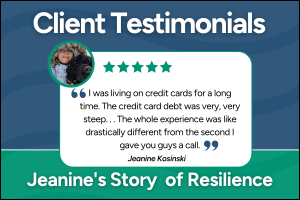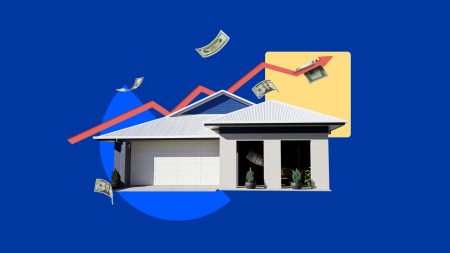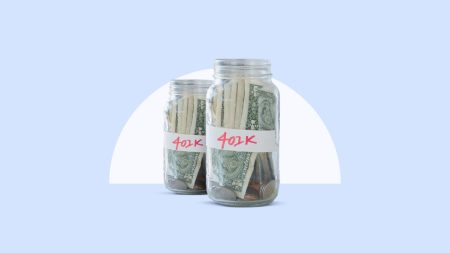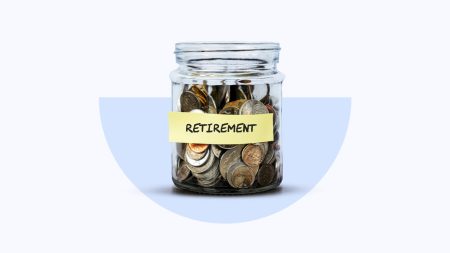Key takeaways
- Pros of a 15-year mortgage include paying less in interest over the life of the loan as a result of a lower rate and shorter term, and paying off your mortgage sooner.
- On the downside, the monthly payments on a 15-year mortgage will be higher due to the shorter repayment schedule.
- Choosing or refinancing to a 15-year mortgage might be a good idea if you can afford the monthly payments or you’re more than halfway into a 30-year mortgage.
The 30-year, fixed-rate mortgage is the go-to home loan — for most Americans. However, you don’t have to lock yourself into a three-decade contract when buying a home or refinancing your existing loan. You can cut that time in half with a 15-year mortgage. Let’s look at the pros and cons of a 15-year mortgage to help you decide if it’s right for you.
What is a 15-year mortgage?
A 15-year mortgage is a home loan paid back in monthly installments over 15 years. Typically, the interest rate and monthly payment are fixed throughout the life of the loan. While paying back your loan faster and saving money on interest sounds appealing, shortening the loan term means increasing the size of your monthly payments.
Benefits of a 15-year fixed mortgage
Reasons a 15-year mortgage might be worth considering include:
- Long-term savings: 15-year mortgage rates are typically lower than 30-year mortgage rates. The difference reflects their shorter lifespan: Because the lender assumes fewer years of risk, it offers a better rate.
- Faster accumulation of home equity: By paying back the loan’s principal faster, you’ll build equity sooner in your home. This has several positive implications: If you’re paying for private mortgage insurance (PMI), for example, you’ll be able to cancel it sooner. You’ll also be able to get a home equity line of credit (HELOC) or home equity loan faster.
- Free and clear, at an earlier point: If you’re approaching retirement — or thinking of early retirement — and want to cut expenses, paying off your home in 15 years instead of 30 is certainly appealing. Even if you don’t mind a monthly payment, redirecting this amount can help you achieve other financial goals that much sooner, or just give your discretionary income a boost.
Disadvantages of a 15-year fixed mortgage
There are also drawbacks to taking out a 15-year mortgage instead of a 30-year one, including:
- Larger monthly payments: A loan term that’s half as long means your monthly payments will be larger than they would be with a 30-year mortgage.
- Potentially tougher qualification requirements: Your lender will want to verify that you make enough to afford these larger payments. As such, qualifying for a 15-year loan might be harder than for a 30-year one.
- Less resources for other goals: A higher mortgage payment can mean less money to devote to an emergency fund, retirement plan contributions or other long-term financial goals each month.
Who is a 15-year fixed mortgage best for?
If you have the financial means to make higher monthly payments, a 15-year mortgage is likely to have a more competitive interest rate than a 30-year loan. As long as you’re able to balance other financial priorities and make payments on time, it’s a strategic move.
However, a 15-year mortgage may not be a good fit for you if you have a lot of high-interest personal loans, auto loans or credit cards. That’s because you might want to focus your available income on paying down these balances first. Saving money on mortgage interest won’t get you ahead in the long term if you’re racking up interest on other debt.
Similarly, if you do not have large cash reserves or you have an uneven income flow, the higher payments of a 15-year mortgage might create a financial hardship. Don’t obligate yourself to pay more if it’ll leave you financially strapped and unable to invest or save for retirement or other future needs.
Keep in mind: If you’re limited in what you can afford monthly, opting for a 15-year mortgage may mean getting a smaller loan overall. And a smaller loan could translate to a smaller or less-well-located home.
Refinancing to a 15-year mortgage
Buying a new home is not the only time to consider a 15-year mortgage loan. You can also refinance to a 15-year mortgage to leverage the benefits of a shorter loan term. If you started with a 30-year mortgage and interest rates have dropped since then, it might be a good idea to consider refinancing. You’d also want to be halfway into your mortgage term, at least, for this move to make the most sense. And since you’ll need time to break even on the new closing costs you’d incur, you’d want to have plans to stay in the home for several more years.
Should you get a 15-year mortgage?
“Before signing up for a 15-year mortgage, consider your goals and finances,” says Andrew Dehan, mortgage writer at Bankrate. “A 15-year will save you money on interest and help you build equity faster than a 30-year mortgage. But, it comes with a substantially higher monthly payment than a 30-year, which could make money tight if you have a drop in income or unexpected expenses.”
When it comes to deciding between a 15- and 30-year loan, a mortgage calculator can help you crunch the numbers in both scenarios and determine what makes the best financial sense.
Let’s say you borrow $350,000 to buy a house. If you took out a 15-year mortgage with a 6.57 percent interest rate, your monthly payment would be $3,062. But if you chose a 30-year mortgage at a 7.23 percent rate, your monthly payment would be $2,383. While the 15-year loan payments are higher, the total interest would be $201,225, whereas the interest on the 30-year loan would be $507,834.
So, should you get a 15-year mortgage?
“There’s no one right answer,” says Jeff Ostrowski, principal mortgage writer at Bankrate. “It really depends on how you feel about debt. If you’re comfortable using debt as a financial tool, the savvy move is to max out your mortgage and put more money into stocks. But if you prefer to be debt-free, then a 15-year loan gets you to that goal more quickly.”
How to pay off a 30-year mortgage in 15 years
If you want to pay off your 30-year mortgage sooner — without taking on the risk and higher payments of a 15-year loan — there’s another option to consider: making extra mortgage payments. This will speed up your payoff timeline, although it might not necessarily get it all the way down from 30 to 15 years.
Specifically, you can put more money toward your loan principal whenever you’d like. For example, if you receive an income tax refund, you could use that cash to pay down your principal. Otherwise, you can make biweekly mortgage payments rather than monthly ones. If you do this for a year, you’ll have made 13 full mortgage payments — instead of 12 — when the year ends.
Additional reporting by Kate Peters
Read the full article here










